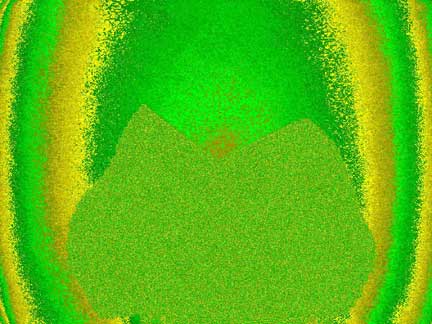Pascuser wrote on Jun 29th, 2012 at 4:47pm:That's a very good idea. I didn't think in moisture.
Yes the air is very different since last time; "heavy" air. I don't have hygrometer so I can't say how much moisture there is but there is a lot I think.
What's more, the windows were opened this time to have a brighter light, so outside air was inside air too.
Last time it was a sunny and dry and "light" day, this time was a very clouddy and "heavy" air day.
Sorry for my bad english, I translate my french expressions in english, maybe this is not very clear in the english formulation.
Good idea, moisture. Maybe moisture attenuates the effect, because of air conductivity increase, so that electromagnetic variations interactions with leaf vital field are attenuated.
I think that Bruce did his experiments on clear sunny days, without any moisture. Am I wrong?
Pascuser,
I have been away for a while and busy with other things, primarily I have been watching the death of democracy in America, and its movement toward a "Kings and Peasants" country. It is a terrible thing to watch.
I'm so happy to see such progress in your work, it's a breath of fresh air for the soul, and I find it fascinating.
I have adopted a basic philosophy I follow when researching the unknown. For as long as possible I attempt to delay coming to any concrete conclusions or explanations to account for what I observe from my experiments. I attempt to see each new observation as evidence that might not be fully understood in the context of the specific, whole, unknown I'm researching. In a sense I am only gathering pieces of an upside down jigsaw puzzle and trying see if any of them fit together. And I try to always remember that when exploring this kind of unknown the experimenters' beliefs can have a very strong influence on the outcome.
Your observation that the air is" very different since last time; 'heavy' air" is one I find interesting. It is evidence that moisture level in the leaf, and perhaps the air, or both, may be a factor in obtaining clear digital phantom leaf images. Maybe it has something to do with the ability of the plant to sustain its phantom energy pattern? Maybe whatever the phantom energy pattern is affects water molecules in the air causing them to coalesce within that energy pattern? Maybe as these water molecules coalesce they form the optical equivalent of lens structures? Maybe these lens structures bend, reflect, or refract light passing through them? Maybe that's why sunlight with its broad spectrum (especially its red, green and blue components) appears to yield better results than sunlight filtered through clouds into shades of gray?
With my philosophy of exploration I look at all those questions as "open questions." Rather than reasons to form conclusions I see them as reasons to ask more questions, to look for more puzzle pieces. As a pragmatic engineer I would be looking to run tests at at least three levels of humidity in the air and perhaps the leaf. I be looking for more observations to determine if air humidity manipulation can be used to enhance digital family photographs.
I also wonder if the fact that direct sunlight is highly colminated, that is its waves are all very nearly parallel to each other, is some factor in getting better digital phantom leaf images. Since all these "light beams" are parallel to each other before passing through the missing leaf energy field maybe we are detecting the disruption in their parallelism. In essence sunbeams passing through vein structures may be bent causing a reduction in light intensity in that area and perhaps greater intensity and another area. These differences in intensity are what we are measuring, perhaps?
As a side note, in your software, is there a way that I can create my own lookup table, or color palette file? The random approach has its advantages, so to does a more structured approach. For example is there a way (Excel, text editor, or?) That I could create a palette with a repetitive pattern of colors? For example could I use the seven colors of the rainbow? For example, I could start with red representing some pixel intensity value, and continue progressively through increasing pixel intensity values to violet and then repeat that rainbow pattern over and over with increasing pixel intensity values. The reason I ask is . . .
The phantom leaf image below used to this sort of color palette. It was a leaf with a large portion of the tip cutaway photographed against a white background in direct, cloudless sunlight. Aside from the hint of a phantom leaf this image also clearly shows the variation of light intensity on the white background. Near the center of the photograph this image was made from the light intensity had saturated much of the camera sensors' pixels. It may be that taking the photograph close to saturation ( too bight a light level) has some positive effect on obtaining digital phantom leaf images. Questions, more upside down puzzle pieces.

Keep up the great work, and to others, join in!
Bruce
 Home
Home

 Help
Help

 Search
Search

 Login
Login

 Register
Register


 Pages:
Pages: 





